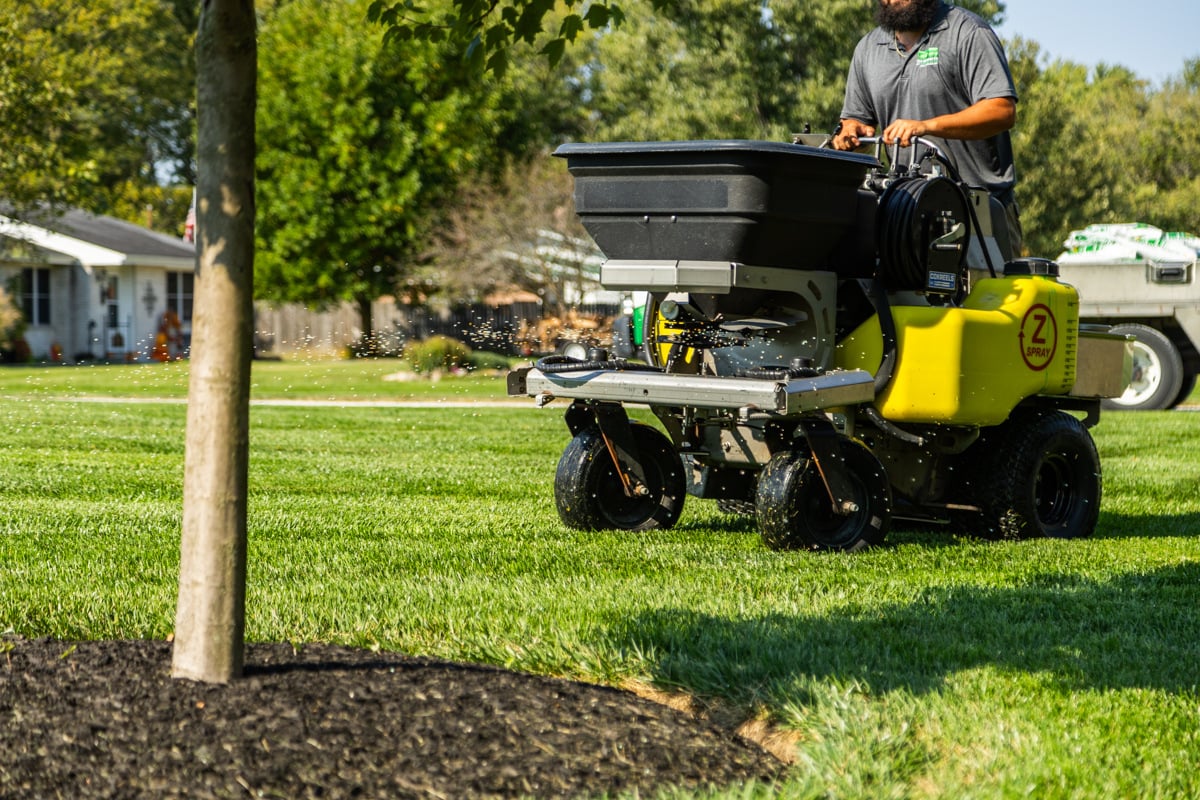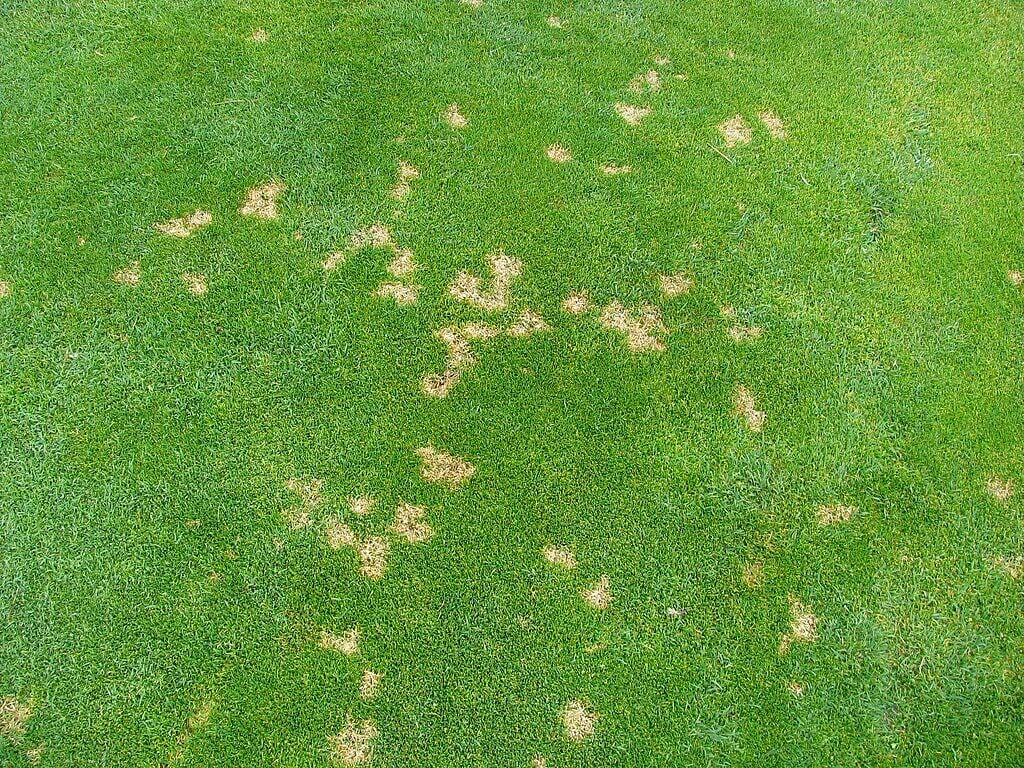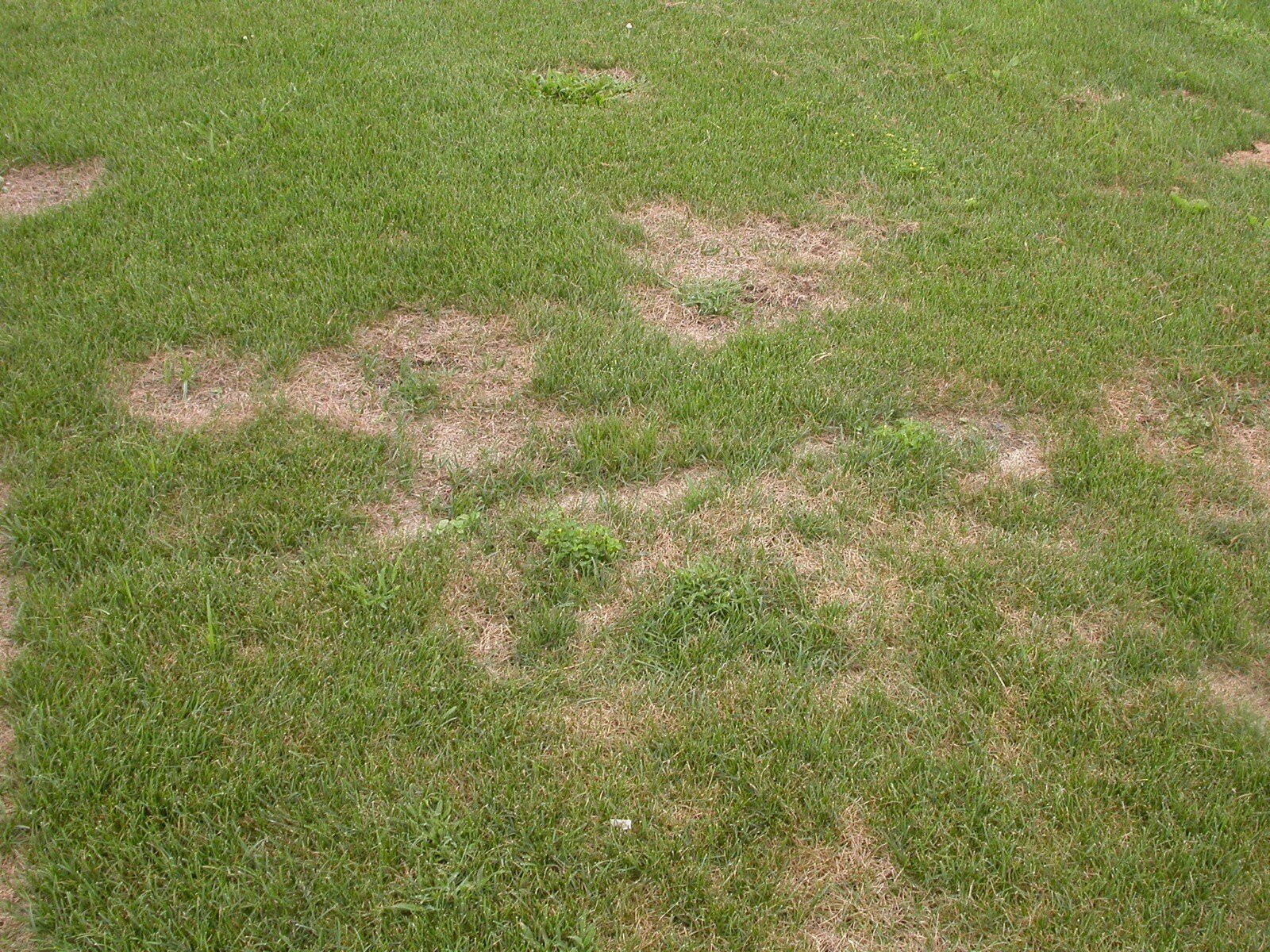



We’ve all been there - you step outside, ready to admire your beautiful green lawn, and instead, you see weird dead patches that seem to have popped up overnight.
It’s frustrating. One minute your grass looks amazing, the next it’s like it’s throwing a tantrum, and you have no idea why. You water, you mow, you even talk to it nicely, but something still looks off.
If your lawn has small, bleached-out spots that seem to multiply or merge into bigger brown areas, there’s a good chance you’re dealing with dollar spot fungus. It might sound cute, but it’s a turf disease that can take a solid lawn and turn it into a patchy mess if you don’t catch it early.
Let’s break down exactly what dollar spot fungus is, how to spot it, and most importantly, how to kick it to the curb, so your grass can get back to being thick, green, and awesome.
 So, you’re looking out at your lawn, and instead of that lush green carpet you imagined, you’re seeing little tan spots popping up like polka dots at a party no one invited you to. Congrats – you might be dealing with dollar spot fungus.
So, you’re looking out at your lawn, and instead of that lush green carpet you imagined, you’re seeing little tan spots popping up like polka dots at a party no one invited you to. Congrats – you might be dealing with dollar spot fungus.
Now, dollar spot disease used to be that snooty problem reserved for golf courses with fancy bent-grass and annual blue grass, but it’s not picky – it can also show up on Kentucky bluegrass, perennial ryegrass, and fescue lawns. If your lawn is a little low on nitrogen and the weather is warm and humid (hello, Indiana summer), dollar spot might just roll in like it owns the space.
Unfortunately, it’s not just a summer thing, it can also hang around in the spring and fall, especially if your lawn isn’t feeling its best.
Dollar spot fungus thrives in certain conditions, mostly when your lawn is already struggling. It loves warm, humid weather, kind of like we get here in Indiana during the summer months. If your lawn is a little hungry (meaning it’s low on nitrogen), this fungus sees that as its cue to move in.  Turf that stays wet for long periods – either from overwatering, poor drainage, or watering late in the day - is basically sending dollar spot an invitation to invade. Add in compacted soil, dull mower blades, or inconsistent mowing habits, and you’ve got a full blown fungus party.
Turf that stays wet for long periods – either from overwatering, poor drainage, or watering late in the day - is basically sending dollar spot an invitation to invade. Add in compacted soil, dull mower blades, or inconsistent mowing habits, and you’ve got a full blown fungus party.
If you’ve got some weird spots popping up in the yard, and they’re not from a dog doing his business or the kids playing soccer, it’s time to do a little lawn detective work.
Dollar spot fungus is usually active in Indiana from April through October (yep, it’s a long window), and it starts by leaving behind little tan or straw-colored patches about the size of a silver dollar. Hence the name. But it doesn't always stay polite and compact. Sometimes these little guys gang up and can form larger patches, turning parts of your lawn into a patchy mess. If you check the leaf blades of your grass, you’ll likely see hourglass-shaped lesions with reddish-brown edges. And when the fungus is actively throwing its little lawn party, the grass blades can look kind of bleached or ghostly white, like they’ve been sunbathing way too long.
If you check the leaf blades of your grass, you’ll likely see hourglass-shaped lesions with reddish-brown edges. And when the fungus is actively throwing its little lawn party, the grass blades can look kind of bleached or ghostly white, like they’ve been sunbathing way too long.
If you head out early in the morning, you may even spot some white, cottony fuzz hanging out on the grass. That’s the fungus making its presence known like a ghostly little lawn blanket.
Okay, so Dollar spot disease has officially moved in. Rude. The good news is, you can fight back. If you’ve already got those telltale tan patches and fuzzy morning fungus parties going on, it’s time to target the worst spots with a fungicide. Start with the most vulnerable areas – the ones that always seem to get hit first or hardest. But here’s the real secret: prevention is your best weapon. If you’re consistently caring for your lawn, you’ll make it way harder for dollar spot to sneak in and take hold.
Start with the most vulnerable areas – the ones that always seem to get hit first or hardest. But here’s the real secret: prevention is your best weapon. If you’re consistently caring for your lawn, you’ll make it way harder for dollar spot to sneak in and take hold.
Dollar spot disease loves turf that’s hungry for nitrogen, so keeping your grass well-fed is a game-changer. A good fertilization program helps your lawn stay thick, healthy, and way less appealing to fungus freeloaders. A light nitrogen boost in late May can even help reduce symptoms in those troublemaker spots that always flare up.
Also, let’s chat about your watering habits. Dollar spot fungus thrives in warm, humid conditions, especially if your lawn stays wet over night. So if you’re running your sprinklers in the evening, it’s time to reprogram. Try to water in the morning instead, giving your lawn time to dry out during the day.
Finally, don’t forget the basics. Good mowing habits matter more than you’d think. Keep your mower blades sharp so they cut cleanly instead of tearing the grass. Ragged cuts make it easier for disease to sneak in. Also, avoid mowing your lawn when it’s wet, and don’t mow it super short.
Dealing with dollar spot fungus can feel like trying to play detective in your own backyard. Is it a fungus? Too much water? Insect drama? Without knowledge and experience, it’s often impossible to know for sure.
The truth is, lawn diseases like dollar spot can be tricky to identify and even trickier to treat if you’re going it alone. Unfortunately, flying solo can also result in a waste of time and money and, sometimes, damage your lawn even further.
Here’s the good news. At Shades of Green, we’re here to take the guesswork out of lawn care. Whether you need help dialing in a fertilization program to fight off disease, identifying weird spots in your turf, or just want to keep things looking lush and green, our team has your back.
Ready to get your lawn back to being the envy of your Carmel, Westfield, or Noblesville neighborhood? Get started by filling out our contact form today!
Image Sources: dollar spot

Cory is the heart and soul of Shades of Green. His dedication to doing right for our customers has been the driving force behind the company's success. With a degree in Turf Science from Purdue University, Cory continually strives to craft the best treatment plans using the latest technologies and innovative products, ensuring top-notch results for every client.





